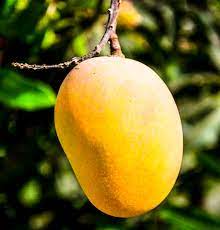CURRENT AFFAIRS
Get the most updated and recent current affair content on Padhaikaro.com
2 Vs 2 Agri market access issues
- Vaid's ICS, Lucknow
- 12, Jan 2022

In News
The Central Government has secured the approval of the United States Department of Agriculture (USDA) for export of Indian mangoes to USA in the new season. Consumers in the United States (US) would now have access to excellent quality mangoes from India.
- The export of Indian mangoes has been restricted by the USA since 2020 as USDA inspectors were unable to visit India for inspection of irradiation facility due restrictions imposed on international travel because of Covid-19 pandemic.
- Recently, in pursuant to the 12th India – USA Trade Policy Forum (TPF) meeting held on November 23, 2021, the Department of Agriculture and Farmers Welfare and US Department of Agriculture (USDA) have signed a framework agreement for implementing the 2 Vs 2 Agri market access issues.
Under the agreement, India and the US would follow joint protocol on irradiation for India’s mango exports and pomegranate exports to the US and import of cherries and Alfalfa hay from the US.
- A revised work plan has been worked out, including phase-wise transfer of oversight of preclearance of Irradiation treatment to India as agreed upon between both the countries.
- As part of the mutual agreement, India will be able to export mangoes to the USA in the mango season commencing with the Alphonso variety of mangoes by March onwards.
- Notably, there is a huge acceptance and consumer preference of Indian mangoes in the USA as India had exported 800 Metric Tonnes (MTs) of mangoes to the USA in 2017-18 and the export value of the fruit was USD 2.75 Million.
- Similarly, in 2018-19, 951 MT mangoes of USD 3.63 Million were exported to USA and 1,095 MT of USD 4.35 Million of mangoes were export to USA in 2019-20.
As per estimates received from the exporters, the export of mangoes in 2022, may surpass the figures of 2019-20.
- The USDA approval would pave the way for exports from traditional mango production belts such as Maharashtra, Uttar Pradesh and Andhra Pradesh and Telangana.
- The Agricultural and Processed Food Products Export Development Authority (APEDA) said that this would also provide an opportunity for the export of other delicious varieties of mangoes from North and East India such as Langra, Chausa, Dushehri, Fazli, etc from Uttar Pradesh, Bihar and West Bengal.
- The pomegranate exports from April 2022. Exports of Alfalfa hay and cherries from the USA will begin in April 2022.
Facts for Prelims
LIQUID MEDICAL OXYGEN (LMO):
Indian Railway has transported more than 14 thousand tons of Medical Liquid Oxygen, LMO to the Hospitals and Covid care centers in the state of Punjab, Haryana, Uttar Pradesh, Uttrakhand and Delhi through its 8 hundred 58 Special freight trains run by Northern Railway.
- Oxygen is crucial for the treatment of patients with severe COVID-19, since the disease affects lung functioning.
- One of the ways in which this oxygen can be supplied is through Liquid Medical Oxygen (LMO). LMO is nothing but high purity oxygen used for medical treatment, and is developed for use in the human body.
- Why in liquid state? Due to its low melting and boiling points, oxygen is in a gaseous state at room temperature. Liquification enables storage in larger volume and easier transportation.
How Liquid Medical Oxygen is produced?
- There are several methods. The most common production method is separation of oxygen in what are known as Air Separation Units or ASUs.
- ASUs are basically plants that separate large volumes of gases. They use a method called Fractional Distillation Method to produce pure oxygen from atmospheric air, which consists mostly of nitrogen and oxygen – 78% nitrogen, 21% oxygen and remaining 1% other gases including argon, carbon dioxide, neon, helium, and hydrogen.
- In this method, gases from the air are separated into various components after cooling them into a liquid state and then liquid oxygen is extracted from it.
- Atmospheric air is first cooled to –181°C. Oxygen liquifies at this point. Since, the boiling point of Nitrogen is -196°C, it remains in a gaseous state. But Argon has a boiling point similar to that of oxygen (–186°C) and hence a significant amount of Argon liquifies along with Oxygen.
The resultant mixture of Oxygen and Argon is drained, decompressed and passed through a second low-pressure distillation vessel for further purification.
We then get the output as final purified liquid oxygen, which is then transported using cryogenic containers